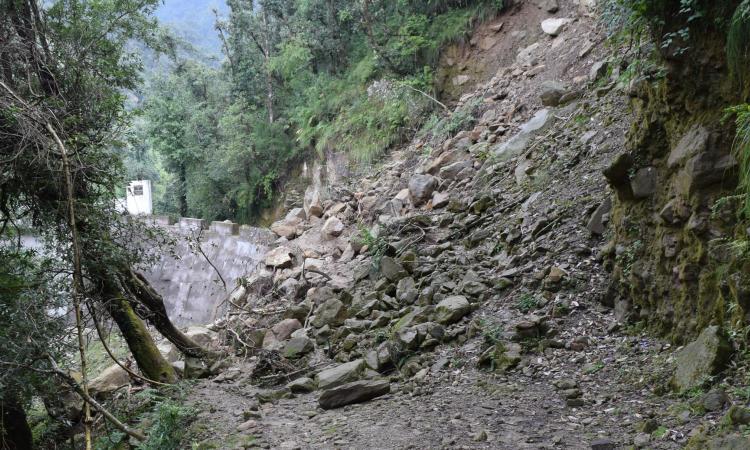
Kodagu, a picturesque hill station nestled in the western ghats of India, faced catastrophic landslides in 2018. The cumulative rainfall in Kodagu district was 3464 mm from January 1 to August 31, 2018. It was 32% more than the average annual rainfall over the last 20 years. The Geological Survey of India identified 105 confirmed landslides in 2018 in the district.
Though Kodagu had a history of landslides (Martha et al., 2019), it was the first time the people had witnessed multiple landslides. The report shows that the army, national disaster response force, police, fire, and emergency services have rescued 850 people. Forty-five relief shelters rendered emergency relief response services to approximately 18 000 people. These landslides killed 20 people, caused 268 livestock deaths, damaged 4056 homes, and caused 103633 ha of crop loss. A Rs. 1400 crore infrastructure loss was reported by the National Disaster Management Authority.
This has become an annual occurrence and has spread to other districts of the Western Ghats range. The paper ‘The experiences of the landslide survivors from Kodagu District, India: Need for community-engaged village/ward level micro disaster management planning’ published in the journal Natural Hazards Research tries to explore landslide survivors' experiences, conventional knowledge, and responses during the emergency relief response.
Disaster management demands documentation of the people's conventional knowledge and its merging with the scientific facts. It also requires documentation of disaster survivors' experiences in all phases of the disaster management cycle.
This gives a comprehensive insight into the planning of mitigation, preparedness, emergency relief response, rehabilitation, and reconstruction phases of the disaster management cycle.
This qualitative study was conducted in the emergency relief response phase, using the purposive sampling technique of landslide survivors in the Kodagu District. Ninety-nine participants were interviewed in 10 focus group discussions (FGD). The FGDs were audio-recorded, transcribed verbatim, and thematically analysed. 35 males and 64 females participated in the study.
All participants shared that they endured horrifying experiences, and fear of life and social triggers played an essential role in self-evacuation. Most were unfamiliar with the landslide's direction, underestimated its severity, overestimated their capabilities, or lacked other resources outside their houses that could safeguard them. They never thought that they would be one of the victims of a landslide.
"I never thought it would be this severe, and I thought we would stay at our home and manage. Usually, small landslips and heavy rains are common, but this was massive, and we failed to anticipate the severity," said a 45-year-old male.
In terms of evacuation and protecting themselves, the absolute absence of two-way communication was the biggest obstacle for the participants. This wrought havoc during the landslide among the participants. Most participants said they constantly listened to the radio (Madikeri Akashavani) for rainfall updates and early warning alerts. Though the information needed to be more comprehensive, that was the only way to disseminate early warning.
Only some respondents attempted to contact the District Control Room (District Emergency Operation Centre), District Administration, and local media personnel, which was futile due to poor cellular connectivity. Due to the loss of road connectivity and poor cellular connectivity, respondents were isolated and disconnected from the external world.
Landslide survivors faced psychological and mental health problems as a result of a vicious cycle that included frightening days, sleepless nights, relentless physical activities, extreme weather, leech bites, dehydration, uncertainty and insecurity in life, and the breakdown of regular support systems.
Experiencing the dark side of life, disputed communication, community-managed immediate disaster response, health concerns of the landslide survivors, and cross-cutting themes are among the topics that have been identified in the research.
Conclusion
The study concludes that community-driven, community-managed evacuation minimised the causalities in the Kodagu landslide in 2018 in the immediate disaster response phase; however, it killed 20 individuals and damaged 4056 houses. The response from the government in the quick disaster response phase was satisfactory.
Though the community was not prepared either traditionally or under the disaster management framework, fear of life and social triggers played a vital role in the self-evacuation, reducing the casualties. Group cohesion and traditional rural community features were much more observable in the initial phase of emergency relief response.
The other challenges include improper communication of situational information, loss of road and cellular connectivity, concerns regarding physical and mental health, direct and indirect loss, and different cross-cutting themes identical to other natural disasters. The community being involved in micro-planning at the village and ward level and further integrating into the district management plan would be the way forward for a well-coordinated emergency relief response.
Recommendations
Although the district had a disaster management plan, the immediate disaster response to the landslide was only satisfactory. Although the community managed to evacuate during this disaster, they greatly lacked landslide preparedness at the community level. Hence, this points to the need for community-based micro-level disaster management planning at village and ward levels, encompassing the development of a community-centric integrated early warning system, community-based early evacuation, and communication through satellite phones for reliable situational information and coordination.
The disaster management plan at the village and ward level allows the community to engage in the planning process, facilitating hazard, risk, vulnerability, and community-level capacity assessments alongside identifying disaster risk reduction initiatives, including mitigation and preparedness measures. However, there are guidelines in India on disability and disaster, women, and disaster-related vulnerable populations that need to be integrated into micro-planning. Micro-level planning also provides an opportunity to incorporate a culture of safety at the household and community levels.
The full paper can be accessed here
/articles/kodagu-landslide-survivors-experiences